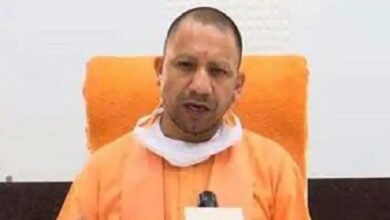[ad_1]

Supporters of Bihar Janata Dal (U) Most Backward Cell celebrate during a procession after the release of the Caste Census, in Patna on October 4.
| Photo Credit: ANI
The story so far: On November 17, the Governor of Bihar approved two laws increasing the quantum of reservations in jobs and education in the State to 75%, including 20% for Scheduled Castes, 2% for Scheduled Tribes, 18% for Other Backward Classes, and 25% for Extremely Backward Classes, and 10% for economically weaker sections (EWS). The two laws have once again sparked debate around the permissible limits of reservations in India, particularly in view of the “50%” limit prescribed by the Supreme Court of India in the Mandal Commission case (Indra Sawhney, 1992), as well as the court’s emphasis on “adequate” representation of the oppressed classes as opposed to “proportionate representation”.
What is the 50% rule?
The Supreme Court has historically maintained that reservations, whether in jobs or education, should not exceed 50% of the total seats/posts. In 1963, a seven judge bench in M.R. Balaji explained that reservations were in the nature of an “exception“ or “special provision“ under our constitutional scheme. Therefore, they cannot be provided for more than 50% of the posts or seats. Though this understanding of reservations changed in 1976 — with it being recognised that reservations are a facet of equality rather than an exception to it — the 50% limit has remained unaltered.
A nine judge bench in the Mandal commission case in 1990 reaffirmed the 50% limit and held that it is a binding rule, and not merely a matter of prudence. However, it is not a rule without exceptions. A State can exceed the limit in exceptional circumstances, that is, to provide reservations to communities which hail from far flung areas of the country and have been kept out of the mainstream of the society. This is not a geographical test but a social one. Besides, last year, the Supreme Court upheld the 103rd Constitutional Amendment which provides for 10% additional reservations to the EWS. This means, for the time being, that the 50% limit applies only to non-EWS reservations, and States are permitted to reserve a total of 60% of the seats/posts including EWS reservations.
What do laws in Bihar state?
In January 2023, the Bihar government announced a caste based census/survey to be conducted across the State. The results of this Census were announced in October. Shortly thereafter, the two Bills (now laws) where introduced in the Legislative Assembly.
Two striking aspects of these laws deserve to be noticed. The first is the obvious breach of the 50% (now 60%) ceiling limit. If and when the laws are challenged in court, the government of Bihar will have to prove that there case falls within the exception carved out in the Mandal Commission case. That is, the communities to whom reservations have been granted hail from far flung areas or have been kept out of the social mainstream. The second is the justification offered by the State government for this breach. Chief Minister Nitish Kumar expressly stated on the floor of the House that the intent is to increase the quantum of reservations in view of the results of the caste Census. However, the Supreme Court has repeatedly held that the State cannot fix the quantum of reservation simply in proportion to the population of the reserved classes. This is because the only valid aim behind reservations is to secure “adequate” representation of the depressed classes, which is different from “proportionate” representation. Therefore, one major challenge before the State government will be to defend the motive behind the move.
Bihar is not the first to cross the line. Other States that have already surpassed the 50% limit, even excluding the EWS quota, are Chhattisgarh (72%), Tamil Nadu (69%, under a 1994 Act protected under the ninth Schedule of the Constitution), and several north-eastern States including Arunachal Pradesh, Meghalaya, Mizoram and Nagaland (80% each). Lakshadweep has a whopping 100% reservations for Scheduled Tribes. Previous attempts by Maharashtra and Rajasthan have been struck down by the courts.
What next?
The Bihar Government appears to be following the footsteps of other States that have already breached the 50% ceiling limit. It seems inevitable that the validity of the two Bihar laws will be carried to the Supreme Court, and the Court will be urged to reconsider the 50% ceiling limit entirely. It remains to be seen whether the court will be inclined to do so.
Shivani Vij and Shrutanjaya Bhardwaj are advocates practising before the Supreme Court of India.



